Imagine stepping into a world where cutting-edge quantum experiments hum alongside ancient philosophical debates, all under one sprawling campus in Hefei. That is the University of Science and Technology of China, a powerhouse that has been shaping scientific minds since 1958. Founded by the Chinese Academy of Sciences during an era pivotal for national development, USTC moved to Hefei in 1970 and since then has become synonymous with innovation. If you’re looking for University of Science and Technology of China Admission Requirements 2025 or tuition fees details, you have come to the right place. Let’s break it down; real talk from official sources, no fluff. With university of science and technology of China tuition fees that won’t break the bank and scholarships covering almost everything, it is indeed one of the smartest picks for ambitious students. In this article from admission institute, let’s now see what makes this University of Science and Technology of China a dream destination.
USTC at a glance
| Category | Details |
| Popular Majors | Physics, Computer Science, Mathematics, Chemistry, Material Science, Quantom Information, AI, Nuclear Engineering |
| Tuition Fees (Annual, RMB) | Undergrad: 26.000-30.000 ($3.600-$4.200), Graduates:30.000 ($4.200), Phd: 35.000-40.000 ($4.900-$5.500) |
| Living Costs (Monthly, RMB) | 1.800-3.000 ($250-$420) for food(800-1.500), transport and entertainment, Dorm: 500-1.000 RMB/Month |
| Admission Requirements | Undergrad: Highschool diploma, HSK 5,SAT/IB/A level (optional) Graduate: Bachelor’s degree, TOEFL 85+/IELTS 6.5+, transcript, 2 recommendation letters, research plan |
| Scholarships | USTC fellowship (a full tuition +7.000 RMB/Month PhD), CSC, CAS-ANSO 95% international funded |
| World Rankings (2025) | QS: 132th /Times Higher Education: 51th, ARWU: 40th, US News: 71th, Nature Index: #1 in China, #2 in the world |
Updated 10/31/2025
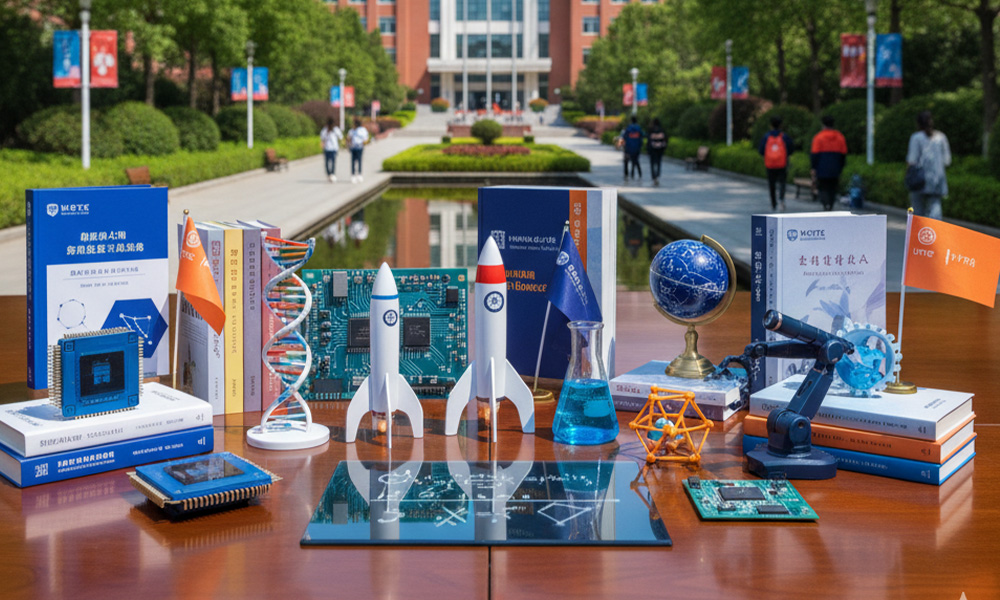
University of Science and Technology of China Majors
Imagine being 19, hunched over a quantum computer simulation, coffee gone cold, while your prof drops a real-world problem from Hefei National Lab. That’s daily life in a University of Science and Technology of China major. USTC doesn’t do theory for theory’s sake-its programs are built for breakthroughs, backed by the Chinese Academy of Sciences. With 35 undergraduate majors across 13 powerhouse disciplines, 91 master’s, and 97 PhD tracks, choices feel endless yet laser-focused on STEM supremacy.
1. Undergraduate Programs
Undergrad grind (4 years, mostly Chinese-taught): Kick off with pure firepower Mathematics (pure/applied tracks), Physics (particle to condensed matter), Chemistry (organic/inorganic wizards). Crave building stuff? Materials Science lets you engineer nanomaterials; Nuclear Engineering preps you for fusion reactors. Tech heads flock to Computer Science (AI/ML heavy), Electronic Information, and Cybersecurity-think hacking defenses for national grids. Life Sciences blends bio with computation; Geophysics maps Earth’s secrets; Environmental Science tackles climate hacks. Newer gems like Engineering Science and Management Science add business smarts to tech. Need HSK5? Yeah, but 70% undergrads jump into research early-no waiting for grad school.
2. Masters
Master’s (2-3 years): With 91 options, many English-perfect for globals. Become an expert in Quantum Information at the world’s top hub or in Nanotechnology for tiny revolutions. AI & Big Data? Projects galore. Fire Science? Unique, saving lives via simulations.
3. PhD
PhD (3-5 years, 97 English-heavy): Pure research rocket fuel. Geophysics, Electronic Science, Materials Engineering—pick your Nobel path. Prodigies hit the School for Gifted Youth early.
Suzhou Campus? English MBAs for Tech Managers. A buddy majoring in Computer Science just published on neural nets and said, “USTC’s majors aren’t classes; they’re missions.” For 2025 lists, hit ic.ustc.edu.cn, download English/Chinese PDFs. Grads? 92% snag elite labs/unis worldwide.
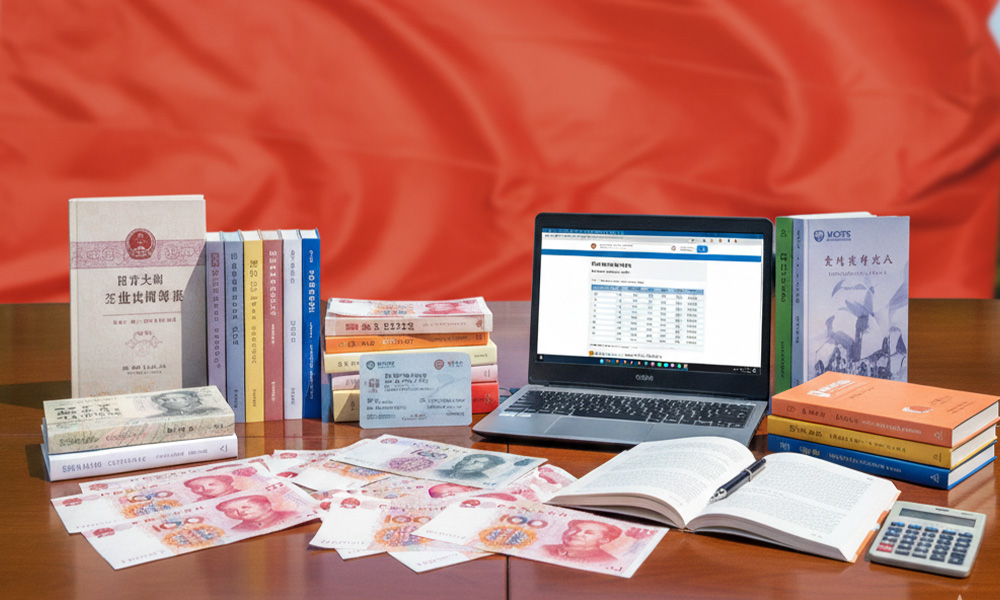
Costs of Studying at USTC
Studying at top Chinese universities like USTC is remarkably cost-effective compared to Western peers. Annual tuition averages 26,000–40,000 RMB (~$3,600–$5,500), while U.S. private unis often exceed $60,000. On-campus dorms cost just 6,000–12,000 RMB/year—a fraction of $15,000+ abroad. Living expenses in cities like Hefei? 1,800–3,000 RMB/month (~$250–$420) covers food, transport, and fun—thanks to affordable canteens (10 RMB meals) and efficient public transit.
Hefei’s not flashy Beijing; it’s a tech oasis where your tuition fees barely dent your savings. Let’s unpack the real 2025 math, straight from official vibes.
1. Tuition Breakdown (per year, RMB/USD approx.):
- Bachelor’s: 26,000 RMB (~$3,600): Pure STEM firepower.
- Master’s: 30,000 RMB (~$4,200) – Loads of English options.
- PhD: 35,000-40,000 RMB (~$4,900-$5,500): research heaven.
- Dorms? Campus twins or singles: 500-1,000 RMB/month (6,000-12,000/year). Clean, WiFi-fast, with laundry on site-beats off-campus hunts.
2. Hefei Living – Monthly:
- Food: 800-1,500 RMB. Canteen feasts? 10-20 RMB/meal—dumplings, spicy noodles, hotpot bliss. Grocery runs slash it further.
- Transportation: 100-300 RMB Bus tickets are 2 RMB, bikes are free, highspeed rail to Shanghai? Weekend steal.
- Fun/Misc.: 300-800 RMB. Gyms, movies, KTV—Hefei’s parks and malls keep it lively without luxury prices.
- Total Monthly: 1,800-3,000 RMB (~$250-420). Annual living: 20,000-35,000 RMB.
Add 800 RMB/year insurance, mandatory, top-notch coverage.
3. Scholarships
95% of international students at USTC receive full funding via CSC, USTC Fellowship, or CAS-ANSO, including 7,000 RMB/month stipends for PhDs. Even self-funded, total yearly cost (~$8,000–$10,000) leaves room for travel or savings. No loans, no stress—just elite education, global credentials, and financial freedom. China delivers Ivy-level quality at community college prices.
A Pakistani PhD friend laughed, “Hefei’s my cheat code, elite degree, pocket cash left for travel.” Inflation? Minimal in 2025; Hefei’s stable. Pro tip: Budget app like Alipay tracks it flawlessly.
Costs of study in China at USTC? Smart money on a stellar future.
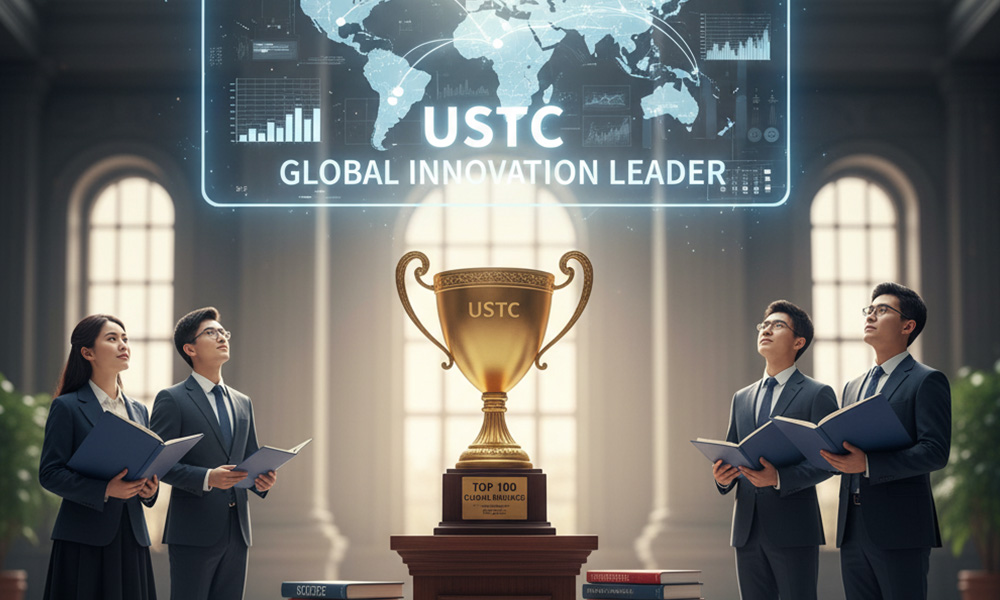
USTC Rankings
University of Science and Technology of China rankings aren’t just numbers; they are proof this Hefei juggernaut rewrites the rules of elite education. Imagine a university that is No. 1 in China/Asia-Pacific for high-impact research, nipping at Harvard’s heels worldwide. In 2025, the aggregate score of USTC through THE, ARWU, QS, and US News was #62 globally, #6 China, #12 Asia, going up like a rocket due to quantum leaps and nano breakthroughs.
World Rankings (2025):
- THE World: #51 global, #6 China, #11 Asia. Crushes teaching and research.
- ARWU (Shanghai): #40 world, #5 China. Pure research beast-7 subjects top 20 globally.
- QS 2026: #=132 overall. Physics? Top 50. Employer rep? Elite.
- US News Global: #71 world, #7 mainland China. Citation king.
- C9 League elite, CAS-backed—92% grads land dream jobs at Google, CERN, or startups. Rankings evolve, but USTC’s trajectory? Unstoppable. Your resume’s future glow-up starts here.
Benefits of Studying at USTC
Step onto the campus of the University of Science and Technology of China, USTC, in Hefei, and you are not just entering as a student but as a disruptor in the making. Founded in 1958 under the Chinese Academy of Sciences, USTC joins the dots between elite research and real-world impact that attracts the ambitious. Here is why studying here in 2025 is a no-brainer, from labs that birth Nobel ideas to a lifestyle that fuels growth.
1. World-Class Research Access
Forget waiting for grad school. 70% of undergrads join national key labs by sophomore year—think Hefei National Laboratory for Physical Sciences at the Microscale, the global quantum hub, or the Synchrotron Radiation Facility. A CS freshman I know co-authored a paper on AI optimization in year two. PhD? You’re publishing in Nature before defense. CAS backing means $2B+ annual R&D—your playground.
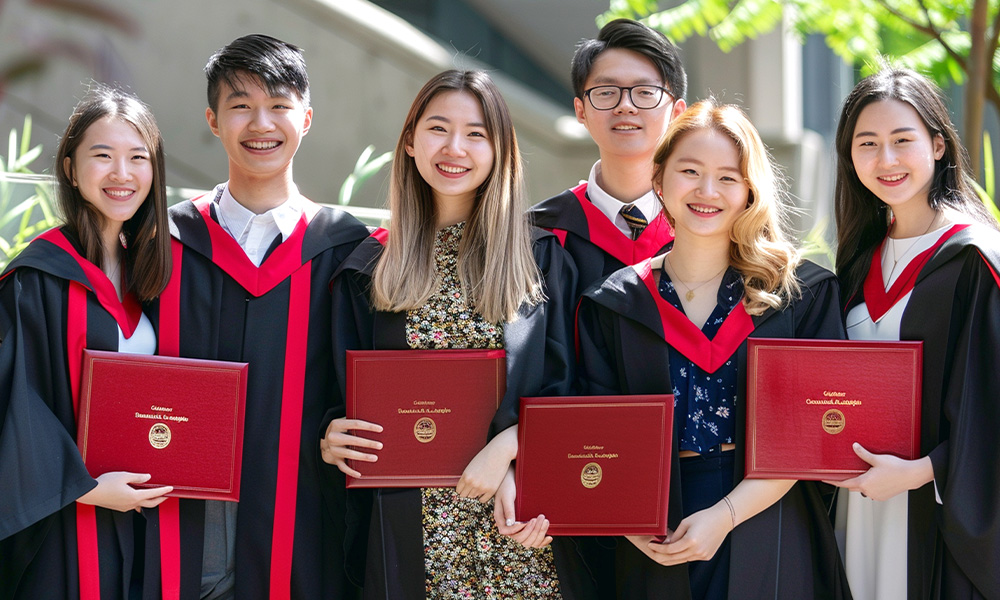
2. Scholarships That Actually Cover Life
USTC Fellowship isn’t pocket change.
Level A (PhD): Full tuition + 7,000 RMB/month (~$980) + free dorm + insurance.
Master’s: 3,000 RMB/month + waivers.
Add CSC, CAS–ANSO, or provincial awards—95% of the internationals study for free. As one Kenyan master’s student told me: “I save more here than I’d earn back home.”
3. Global Network + 92% Elite Placement
Graduates don’t hunt for jobs; rather, they get recruited. Huawei, Alibaba, and Tencent camp on campus. MIT and Stanford sweep up the PhDs, as does CERN. Alumni of USTC include Pan Jianwei, pioneer in quantum, and Yi Gang, ex-central bank chief. Career fairs? Over 300 firms. Return on investment? Physics graduate gets 200K RMB starting, approximately $28K, skyrockets with experience.
4. English-Taught Programs + Cultural Fusion
All PhDs, 80% master’s in English. No HSK stress for grads. FuSEP summer camps, Belt & Road exchanges, and Hefei’s international fests blend cultures—think Nigerian jollof meets Anhui hotpot. Safe campus, 24/7 security, high-speed rail to Shanghai in 2 hours.
5. Hefei: Affordable, Vibrant, Future-Proof
Living costs? 2,000 RMB/month (~$280) covers food, fun, and travel. You can eat on the street for 15 RMB, go to the gym free, and run along the lake priceless. Hefei’s “Silicon Valley of China” tag means internships at iFlytek, BOE, CAMSD, among others. No Beijing chaos: focus thrives here.
The bottom line is, USTC doesn’t just teach science; it creates scientists. At low cost and high output, with global doors open wide. As one Brazilian PhD summarized: “USTC gave me tools, network, and confidence to lead.” Your advantage? Starts with one application at ic.ustc.edu.cn.

University of Science and Technology of China Admission Requirements
Getting into USTC is competitive, like trying to get a place in a rocket launch, but the University of Science and Technology of China has admission requirements that are simple and quite fair. The acceptance rate is 10%, so shine bright.
Undergraduate (2025 intake): To have a high school diploma by the beginning of July; be under 30 years old. Parents or guardians are required for applicants under 18 years old. Nail the new HSK Level 5 or proof of exemption. Submit
transcripts, physical exam, recommendation from school. SAT/IB/A-Level/ACT scores boost chances—aim high, like 1300+ SAT. Apply Oct 2024~Mar 2025 via ic.ustc.edu.cn; decisions by June.
Master’s: Bachelor’s (science/engineering preferred), English proficiency, transcripts, 2 prof recommendations, study plan. PhD: Master’s, same docs plus research proposal.
Procedure: Online application → Review → Online test/interview → Admission Notice + JW202 visa form. Eligibility: Non-Chinese citizens only, healthy, no dual scholarships in china.
Conclusion
In 2025, the University of Science and Technology of China stands tall among the most innovative universities in the world, blending rigors of admissions with affordable tuition fees and world-class resources. From quantum labs to top-tier rankings, University of Science and Technology of China admission requirements equips dreamers with tools at the forefront to lead tomorrow’s breakthroughs. Scholarships ease the way, while Hefei’s vibrant, budget-friendly life fuels growth. Master AI, physics, or engineering-you’ll join an elite network driving real impact. Don’t just study the future, build it. Your moment is now. our experts consultants specialize in securing spots at Chinas elite universities like USTC, Tsinghua, and Peking. Contact us if you need a guidance through application process. Our admission advisors can help you navigate USTC’s 2025 intake step-by-step. One consultaion can turn Maybe into acceptamce.
1. What are the minimum language requirements for international students applying to USTC in 2025?
International undergraduates must provide a valid HSK Level 5 certificate (180+ score) for Chinese-taught programs, or proof of education in Chinese/English (e.g., IB, A-Level in English medium). Graduate applicants need IELTS 6.5, TOEFL 85+, or equivalent for English-taught programs. Native English speakers and those with degrees from English-speaking countries are exempt.
2. How much does it cost to study at USTC without a scholarship?
Annual tuition is around 26,000–35,000 RMB (~$3,600–$4,900), depending on the program. Add 6,000–12,000 RMB for on-campus housing and 15,000–25,000 RMB for living expenses in Hefei. Total: 50,000–70,000 RMB/year (~$7,000–$9,800)—still far below U.S. or U.K. equivalents.
3. When should I apply for the 2025 intake at USTC?
Undergraduate applications open in October 2024 and close on March 10, 2025. Master’s and PhD deadlines are usually January 15, 2025 (Round 1), and March 10, 2025 (Round 2). It is recommended to apply early at ic.ustc.edu.cn or isa.ustc.edu.cn since scholarships are awarded on a first-come, first-reviewed basis.


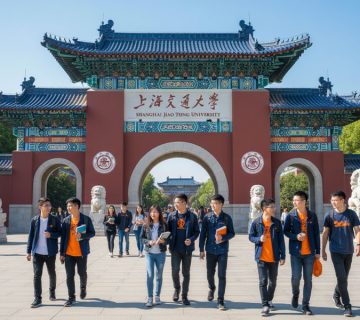
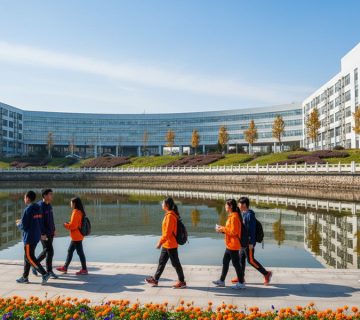
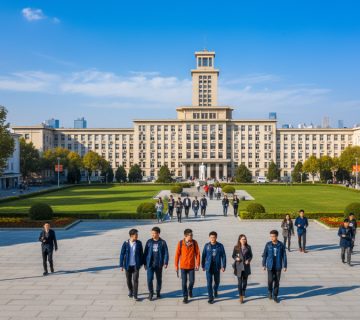
No comment